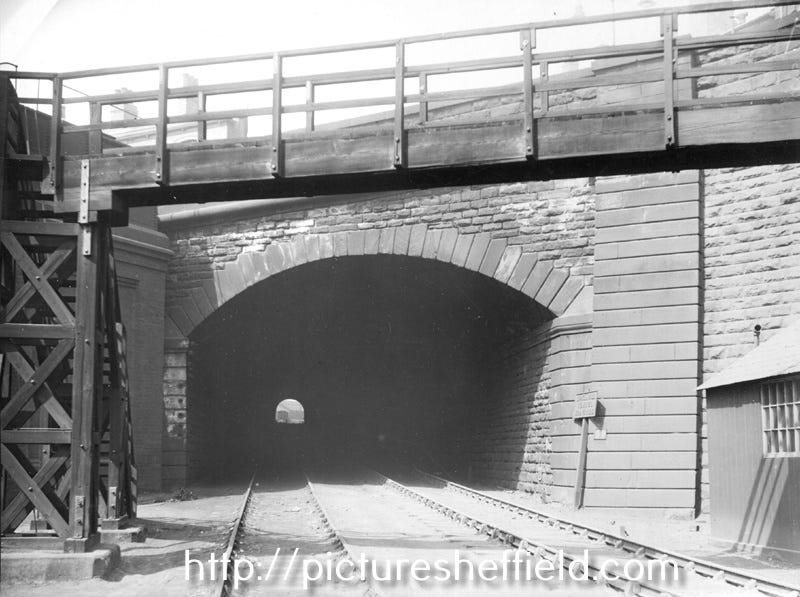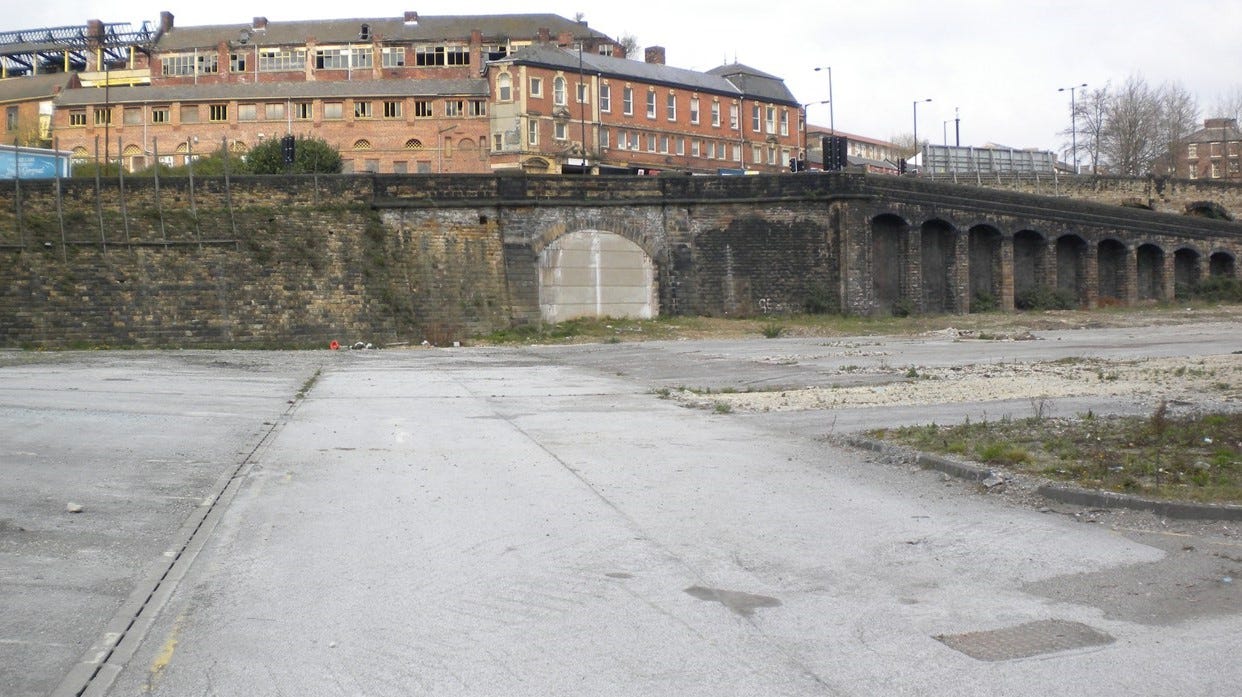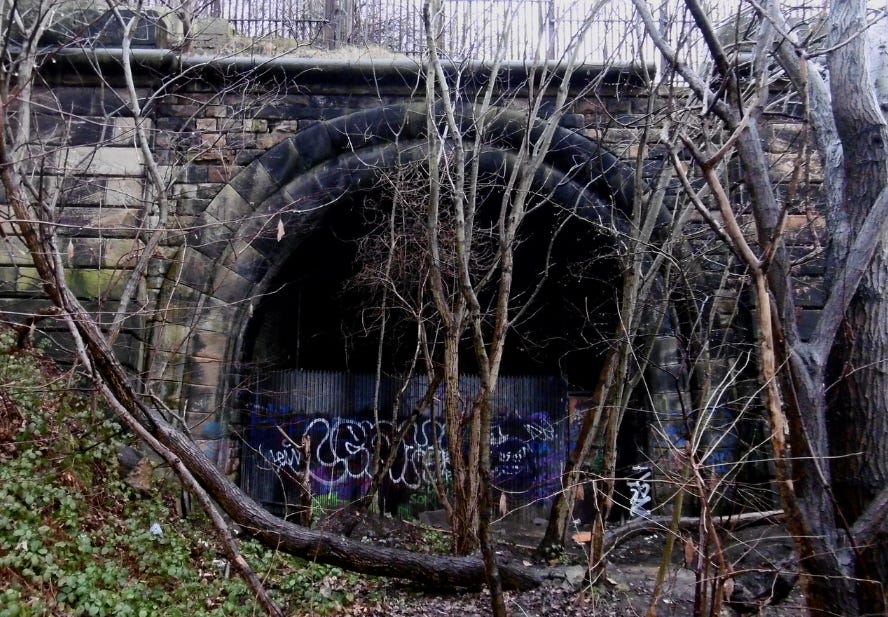Sheffield has a lot of tunnels, mainly linked to old industrial workings. We also have more than our fair share of legends about underground passages! This is a story about one that’s very real, although now sadly neglected and mostly forgotten - the old railway tunnel which runs from just off the bottom of Brunswick Road in Pitsmoor to the Tesco supermarket site at the bottom of Spital Hill.
The present day Sheffield (Midland) Station is our fourth oldest city centre railway station. The first three are now gone; The most well known and longest lived, Sheffield Victoria, opened in 1851 and officially closed to passengers in 1970. Before that Sheffield’s first two railway stations were Wicker, which opened in 1838, from where services went to Rotherham in order to link Sheffield with the Midland Railway, and then Bridgehouses opened in 1845 as the original terminus of the line between Sheffield and Manchester (the ‘Woodhead Line’).
Spital Hill Tunnel was constructed in 1846 linking the original two stations in order to move freight between them. Bridgehouses Station was quickly superseded by Sheffield Victoria when the larger terminus became necessary, whilst Wicker Station closed in 1870 when the Midland Railway finally came to Sheffield and the present station was opened. The tunnel itself was just over three hundred yards long, with a stiff gradient climbing up to the Bridgehouses end, earning the tunnel the nickname ‘Fiery Jack’ as sparks were said to fly from the engines struggling on the uphill journey.
The view from the Wicker end of the tunnel in 1929
Both Bridgehouses and Wicker were to enjoy far longer lives as goods yards than they did as passenger stations, both finally closing in 1965. The final days of the Bridgehouses yard were featured in a 1969 BBC documentary about railway workers in Sheffield named ‘Engines must not enter the potato siding’ (which can be found online) - the unusual title being taken from a directive displayed at the goods yard.
Today the two station sites are very different. Wicker goods yard is now a large Tesco building and car park, while much of the Bridgehouses site is undeveloped and very overgrown (it used to extend further over Derek Dooley Way and as far as the Harlequin pub on Nursery Street). The bricked up Wicker portal was still visible until the building of the new Tesco a few years ago, but the other portal at the Bridgehouses end still exists. It is blocked off to more intrepid explorers but the structure remains.
The bricked up Wicker portal before the Tesco was built
The fate of the Wicker yard portal being buried under a Tesco might be a sad one, but the real disgrace is the current situation at the other end. The Bridgehouses portal has been abandoned, and has for many years been a haven for drug use due to its hidden away location. To reach the site means a short scramble through the undergrowth from Brunswick Road, but it’s not recommended due to needles and other unsafe objects lying around. Once a month council workers clear the site, and they have been kind enough to let me join them on occasions to have a safer look around.
The sorry state of Spital Hill Tunnel’s Bridgehouses portal
These social problems are sadly all too real, and I appreciate that just moving people on doesn’t do anything to solve their issues, however this particular site has attracted the mis-use that it has because of a longstanding neglect of a piece of Sheffield history. It has not been abandoned due to anti-social behaviour - it has an issue with anti-social behaviour because it has been abandoned. The site is no more than twenty or thirty yards from the street and could easily accommodate an information board, a path, and a safe place to view an interesting and still very striking piece of industrial heritage. The ‘Fiery Jack’ and the people who worked it deserve that much of a legacy at least.






